CHESS
5,334 Problems, Combinations, and Games INTRODUCTION BY BRUCE PANDOLFINI Lszl Polgr

Copyright 2013 Lszl Polgr All rights reserved. No part of this book, either text or illustration, may be used or reproduced in any form without prior written permission from the publisher. Published by
Black Dog & Leventhal Publishers, Inc.
151 West 19th Street
New York, NY 10011 Distributed by
Workman Publishing Company
225 Varick Street
New York, NY 10014 Manufactured in the United States eISBN-13: 978-1-60376-335-6 Library of Congress Cataloging-in-Publication Data is available.
FOREWORD
There are more than 5,000 problems in this book. Most of them can be solved within a few minutes. There are few books containing chess problems, games and endgames which are not only easy to solve but elegant and instructive as well.
And there are even fewer that offer a sufficient number for regular and intensive training over a relatively long period. With this book, I would like to provide some help for those who are learning the game alone, and for parents and coaches too. A word of guidance before we start. First, learn the names and the colors of the squares on the chessboard. Never move the pieces while solving a problem. Solving the problems in this book may result in a considerable improvement in your tactics, logic, concentration and imagination, and will also be a source of motivation nothing is as encouraging as success and achievement.
You can use your new knowledge in playing with partners and in tournaments too. Studying the miniature games (maximum 25 moves) will help you to avoid errors in game opening, and it will improve your arsenal for attacking the king. Children are more interested in short games, and they can concentrate on them better than on long ones. The two-move miniature games (maximum number of pieces: 7) are not difficult, but they are enjoyable, and make it possible to proceed to more challenging chess problems. They may also inspire you to study the literature dealing with problems, or even to create your own chess problems. This book draws on my private collection of five thousand chess books, and my archives of periodicals going back 150 years.
I have also used the experience gained in the training of my three daughters Olympic gold medallists, Oscar-award winners, holders of several Guinness records, champions of the world, for many years first and second in the world ranking and during my fifteen year activity as a chess tutor in extracurricular classes at various schools. In addition to studying the book, beginners who may wish to become tournament chess players should play every day even against a chess computer if they do not have a regular partner. And the repeated problems in the book will repay repeated solving and study. The book aims to strengthen the positive skills and discipline needed for competition in chess (and any other field) but above all it aims to give pleasure. Apart from the foreword and the chapter Key to symbols, the following 1000 pages are written in international chess terms, and thus the book can be read in any country by those who wish to improve their knowledge. The chapters containing problems and combinations might be useful for setting up problem-solving contests.
The problems figuring in this collection cover the history of chess literature from 1140 to the present. There are problems by Pl Benk, the international grandmaster, created especially for this collection, and there are 125 combinations from the tournament games of the Polgr sisters. This book is primarily intended for beginners and amateurs, from the basic level to master candidate (2,200 Elo points), and can be enjoyed by players of all ages. I wish to thank Knemann Verlag for making it possible to publish a chess book of so wide a scope; Kulturtrade for editing the manuscript; my daughters for their help in professional matters; and my wife for her help with technical problems. B UDAPEST, 1994
L SZL P OLGR
INTRODUCTION
By Bruce PandolfiniChess, as this Lszl Polgr volume is titled, is perhaps the most comprehensive book ever conceived on the art of checkmate. Mr. Mr.
Polgr, the father and personal chess trainer of the renowned Polgr sisters of Hungary, has provided over 1,100 pages of brilliantly organized didactic and practical paradigms to equip the reader with the weapons needed to play power chess. Here reconstructed is the path followed by Zsusza, Zsofia, and Judit Polgr in their meteoric climb to the top of the chess pantheon. It is said that each sister worked through and played out similar groups of their fathers carefully chosen and arranged examples, until vital patterns and schemes became second nature, very like the way music students master finger exercises. The format is beautifully logical, as with all grand strategies. There are sections of related problems, six large diagrams per page. Examples in a section are subdivided further, based on which player, White or Black, moves first.
The text is minimal, but the presentation, is clear enough for even beginning students. Anyway, its well known that the best chess instruction is largely visual. Of the initial 4,462 problems here, 306 are mates in one move; 3,411 are mates in two moves (the attacker plays, the defender responds, the attacker mates); and 743 are mates in three moves (the attacker plays, the defender responds, the attacker plays a second move, the defender responds again, and the attacker gives mate). Some of these mates have been composed for instructional purposes, but others have been taken from real chess games. Each of these sections is large enough to constitute a book in itself, and the chapter on mates in two alone could enrich several years of study. (A symbol of the moving piece appears instead of an abbreviating letter, so anyone can follow in any language.) Each game begins with the opening moves guiding the reader to a pivotal moment. (A symbol of the moving piece appears instead of an abbreviating letter, so anyone can follow in any language.) Each game begins with the opening moves guiding the reader to a pivotal moment.
A diagram prompts the reader to find the next move, suggested by the subsection in which the game appears. For instance, if a game is in the f3 section (examples 4,4634,562), the winning move must be made to the square f3, if it is Blacks move, or f6, if it is Whites. What better clue could be given than an indication of the destination square? Next is a chapter of basic endgame positions (5,0635,206), each of just a few pieces and mainly concluded by promoting a pawn into a queen, important patterns because many games reduce to a situation where the extra queen assists checkmate. From this Olympian preparation, the book moves into its final chapter (examples 5,207 5,333), consisting of short tactical games played by the Polgr sisters themselves. These contests all illustrate incisive attacks and winning stratagems utilized by Zsuzsa, Zsofia, or Judit in their confrontations with masters and world class players throughout their tournament and match careers. The solutions and pertinent factual information (place, date, and name of the Polgr opponent) are found in the concluding segment, containing all the answers for the books 5,334 examples.
The very last diagram, by the way, is a bonus problem created by the middle sister, Zsofia Polgr, the placement of the pieces tracing the outline of a rook! The tome ends with a short biographical sketch of the author and a helpful bibliography of sources of the problems not personally developed by Lszl Polgr. If youre new to the game, you can begin at page one and proceed step by step. Chess conveniently provides a pithy introduction to the moves and rules, for some reason omitted from most tactical chess books. Even experienced players might prefer reviewing this introduction before tackling the actual problems. Another approach, just as viable, is to focus on particular sections or themes for special study, since each grouping, though part of a logical whole, is also a self-contained unit. You might decide not to work directly from the book but to set up problems on a chessboard.


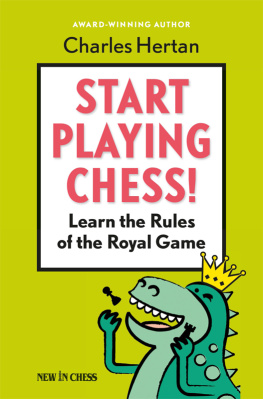
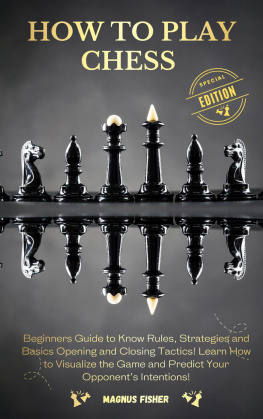
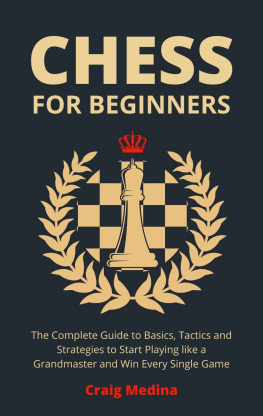
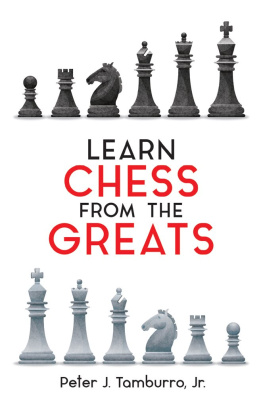
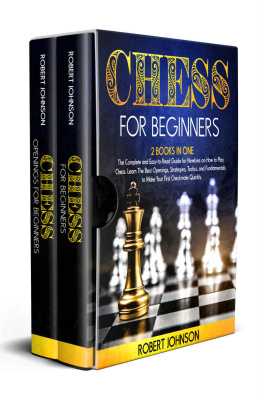
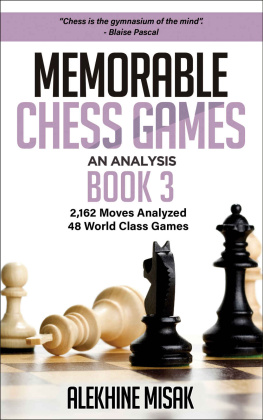

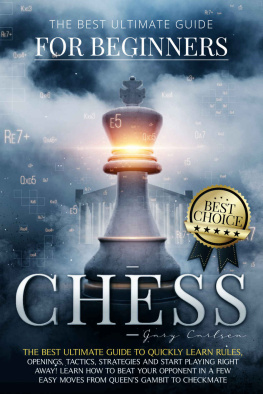
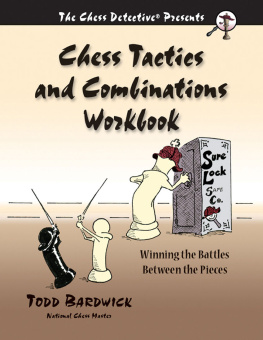
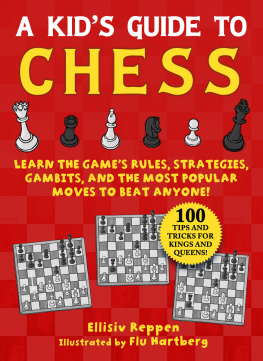
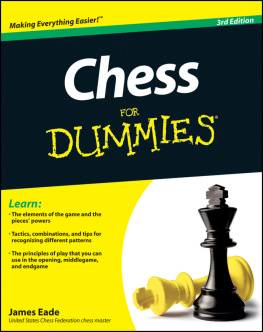
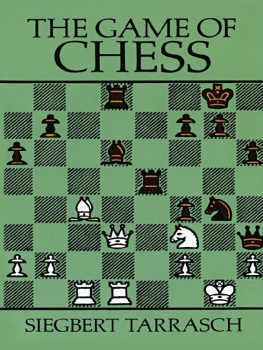
 Copyright 2013 Lszl Polgr All rights reserved. No part of this book, either text or illustration, may be used or reproduced in any form without prior written permission from the publisher. Published by
Copyright 2013 Lszl Polgr All rights reserved. No part of this book, either text or illustration, may be used or reproduced in any form without prior written permission from the publisher. Published by